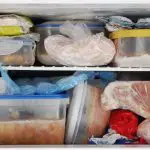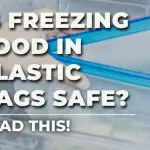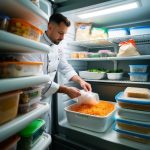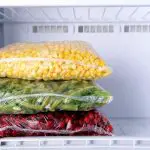What It Means to “Flash Freeze” Food (Explained)
Flash freezing is not really accomplished in a flash, especially if you are a home cook with an ordinary freezer, but it is still a convenient way to freeze food fast.
The term flash freezing simply means quickly freezing food at extremely cold temperatures. This allows the flavor, texture, and nutrients to be retained in the food. Flash freezing a food item in a commercial freezer can be done in minutes, while flash freezing in a home freezer will take longer.
True flash freezing requires industrial nitrogen technology that solidifies fresh food on the spot, you can practice a version of it at home by freezing smaller portions of food separately.
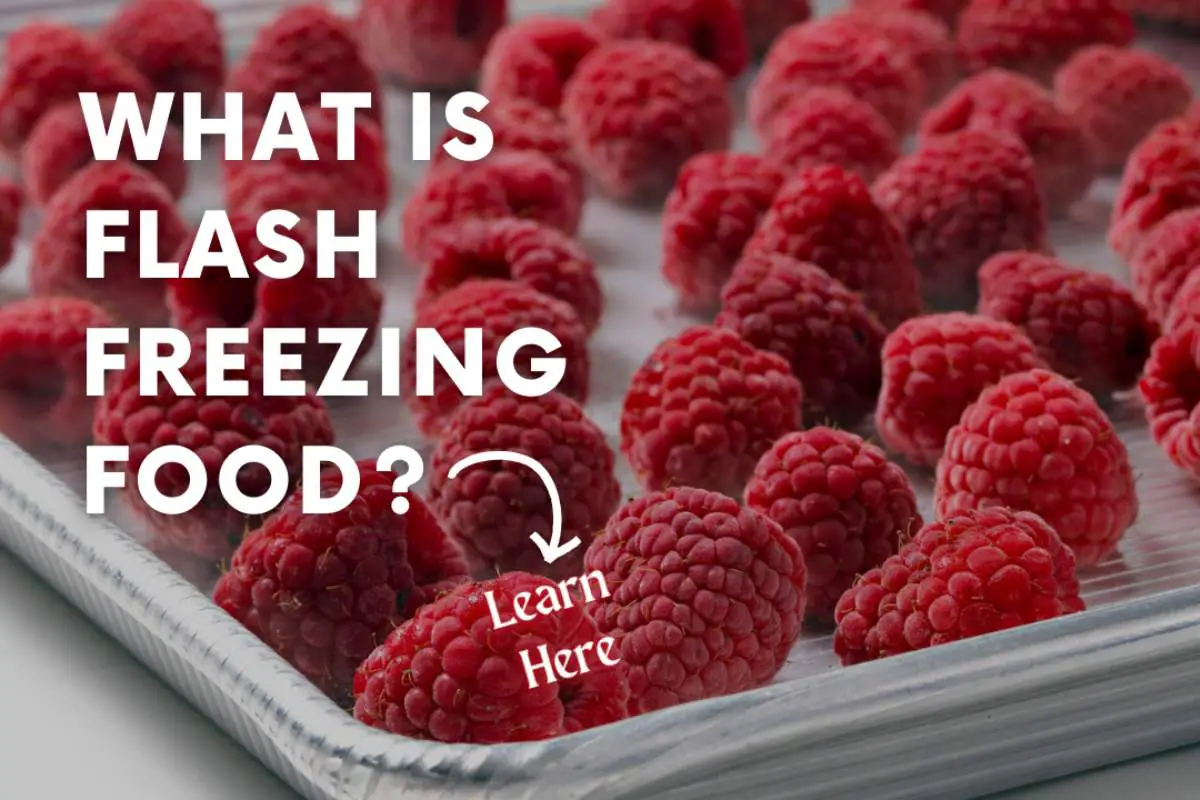
The Industrial Origins Of Flash Freezing Food
Flash freezing finds its roots in the early days of the frozen food industry when Clarence Birdseye sought a way to freeze fresh vegetables so they would last through the winter.
His inspiration for flash freezing came from observing the native Inuit people in the Artic in the 1900s. He noted how they used sub-zero temperatures and icy winds to instantly freeze fresh fish.
He noted how food stored at extremely low temperatures kept its flavor, color, and texture much better than food frozen slowly in a conventional freezer.
The result was the formation of the Birdseye frozen food empire, along with a patented quick freeze process that quickly iced meat and vegetables in mass quantities.
Meats and vegetables were frozen so rock solid that they could last for months in a home freezer, and the low temperature they were frozen at kept foods separate, so nothing was frozen in a clump.
3 Different Ways To Flash Freeze Food

There are three different ways to flash freeze foods: blast freezing, home flash freezing, and ultra-cold surface flash freezing.
Blast Freezing
Blast freezing is used in professional kitchens to freeze food solid in a short time using a special freezer that rapidly circulates -40F air. In comparison, the typical home freezer only freezes to -18F.
Home Flash Freezing
Compared to blast freezers, a conventional freezer is less efficient. Home freezers don’t have rapid circulating air or blast chillers.
With typical home-grade freezers, small food portions are laid out on a tray covered in parchment paper and placed directly into the freezer. In an hour or two (depending on the item being frozen), the tray is removed from the freezer, and the now frozen food is placed in freezer bags and put back into the freezer for storage.
Ultra Cold Surface Freezing (Freezing Griddle)
Ultra cold surface freezing utilizes a steel griddle to immediately cool foods to -30°F in seconds. Sometimes they are called anti-griddles or freezing griddles.
This gourmet chef’s appliance is meant to freeze foods before you serve them, but you can also use it to prepare foods for the freezer.
Flash Freezing Food At Home
Flash freezing at home really should be called double freezing, as that is what the process entails to freeze food quickly. First, you freeze food items unwrapped on a tray, then once frozen, you wrap them up and place them back in the freezer for long-term storage.
One of the purposes of flash freezing is to get the produce or meat cold enough to prevent the growth of microbes.
Flash freezing food prevents ice crystals and clumping. It also prevents freezer burn. Foods that clump together are things like hamburger patties, shrimp, sausages, chicken wings, berries, corn, peas, and many other types of vegetables.
Think of home flash freezing as quick freezing of small, individual items. Berries are a good example as each individual berry will freeze within a short period of time, while freezing something like a whole turkey would take much longer to freeze solid all the way through.
How To Flash Freeze Food At Home
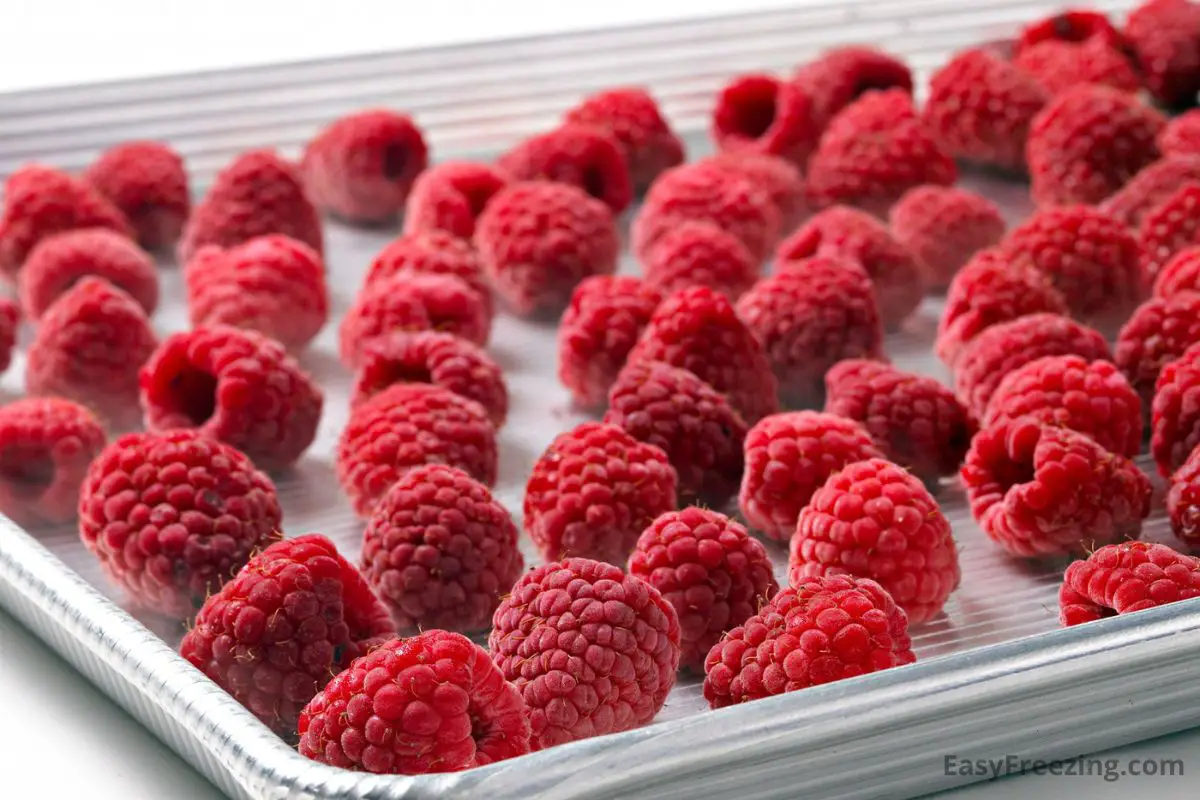
Here is the technique for flash-freezing food at home.
Step #1: Prepare Foods for Freezing
Flash freezing lets you get fresh foods from the supermarket to your freezer as fast as possible to avoid any spoilage from air exposure.
First, you’ll want to prepare fresh fruits and vegetables for freezing by cleaning them thoroughly to remove any dirt, pests, or bacteria.
Next, you’ll need to shake the water off the food item and pat it dry with a paper towel.
If you are freezing meat, cut it into small portions. One-inch cubes are the preferable size for steak and boneless chicken breasts. Foods that are cut up into small portions freeze faster and will be harder.
When freezing ground beef, turkey, or chicken, form small balls or thin patties. You can also put any ground meat in a freezer bag and roll it flat with a rolling pin before creating portions.
Lean towards small portions when you are dividing up tiny vegetables like peas or corn, and be sure to break larger vegetables such as broccoli or cauliflower into smaller chunks.
Step #2: Arrange Foods On A Tray
Arrange cut-up foods on any type of metal tray, as metal conducts cold temperatures better. A baking sheet is perfect.
Make sure that the tray is small enough to fit in your freezer and sit flat. If it is placed on a slant, then food could slide together or roll right off.
To ensure that food portions don’t stick to the tray, first line it with parchment or freezer paper.
Arrange your individual portions or cut-up pieces of food on the baking tray. Make sure they are not touching each other, or they will stick together when frozen.
Once the items are arranged on your tray, place it in the freezer.
Step #3: Freeze The Food And Pack It In Freezer Bags
Your goal at this stage of the process is to freeze the food portions until they are rock solid. This can take anywhere between one to five hours, depending on the food items you’re freezing.
While you’re waiting for the food to freeze, put labels on your freezer bags along with the date so that you know which foods to thaw and eat first.
Once the food items are frozen solid, transfer them into freezer bags with a Ziploc-style zipper closure. If you have a vacuum sealer, you can use it to suck the air out of your freezer bags so that your frozen foods last even longer.
Because your food items were frozen without touching each other, they will be less likely to stick together once placed into the freezer bag.
There is no real way to flash freeze soups, stews, chilis, or curries simply because you can’t spoon them onto a baking tray. However, some people get around this by freezing soups and stews in metal ice cube trays or muffin tins and then placing the cubes into a freezer-safe bag.
Foods Not To Flash Freeze

Some foods just can’t be flash frozen because their textures are completely ruined by the process, or they pose a risk to your health once they are thawed. Foods that shouldn’t be flash frozen include:
- Eggs (raw or cooked, in the shell or not, just don’t do it)
- Cucumbers
- Any thin-celled leafy vegetables such as lettuce
- Cheeses
- Deep-fried items
- Most fruits and vegetables, unless they have been blanched first (Here is a list of vegetables that can be frozen without blanching)
In short, most items that freeze well can be flash frozen prior to packaging and freezing them long term.
How Long Can Flash Frozen Foods Last?
In general, flash freezing does not change how long a particular food item can be frozen. For instance, most berries can last for up to 12 months in the freezer.
So, whether you froze them normally or flash froze them, they will still last up to a year in the freezer. However, you will probably find that the flash frozen berries look and taste better after several months in the freezer.
Can You Refreeze Thawed Flash Frozen Foods?
The US Department of Agriculture states that it is safe for consumers to refreeze thawed food as long as it has not spent more than two hours out of the freezer (at room temperature). The USDA also advises consumers to thaw all food in the refrigerator, whether it be frozen berries or chicken breasts.
Thawed cooked food can also be refrozen. The only caveat here is that repeatedly frozen food loses its texture and flavor, so you may want to think twice before re-freezing flash-frozen foods.
What It Means to “Flash Freeze” Food – Conclusion
Ultimately, the perfect way to flash freeze foods at home is to place small, unwrapped food items on a baking sheet that you put in the freezer for a couple of hours or more. The cold temperatures do not allow ice crystals to form and degrade the quality of the food structure.
Then use a zippered freezer bag or a vacuum sealer to seal the separate food portions in a plastic bag once frozen.
I think you’ll find that food that was flash frozen both looks and tastes better and provides you and your family a higher degree of nutrients.

